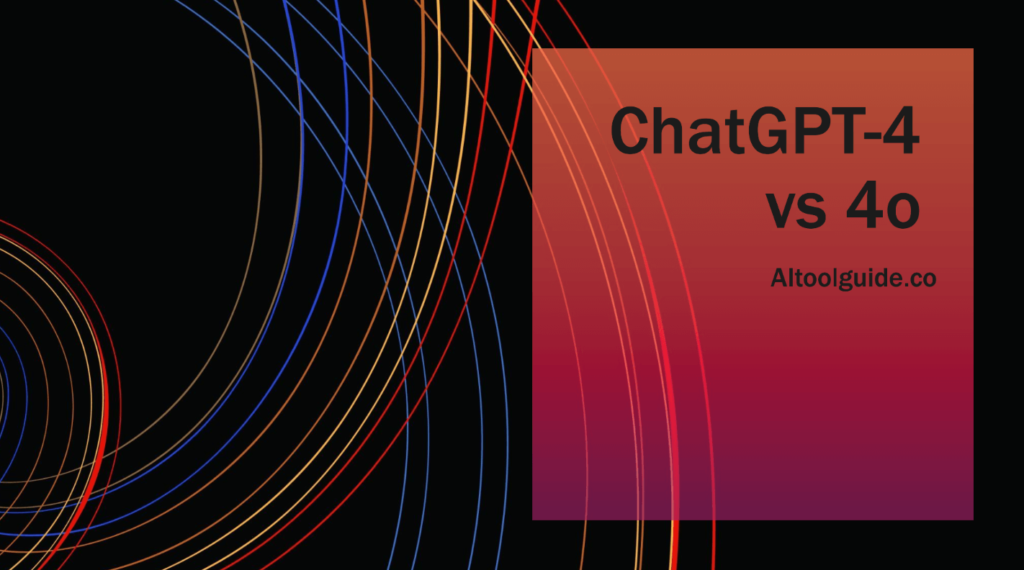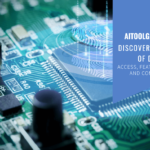ChatGPT-4 VS 4o are two of the latest advancements from OpenAI, each bringing unique capabilities to the table.
ChatGPT-4, known for its enhanced language fluency and contextual understanding, supports multimodal inputs such as text and images, making it a versatile tool for customer support, language translation, and content creation.
On the other hand, GPT-4o, the newest flagship model, offers superior precision, real-time sound, and image analysis, and more coherent text generation, making it ideal for advanced content creation and technical problem-solving.
The user can make an informed decision about which AI tool is right for them by comparing these models. We’ll look at all the features, advantages, and applications of ChatGPT-4 and GPT-4o, examining their differences and potential impact on various industries.
What is ChatGPT-4?
ChatGPT-4 is the latest iteration of OpenAI’s Generative Pre-trained Transformer (GPT) series, a state-of-the-art language model designed to understand and generate human-like text.
Launched on March 14, 2023, ChatGPT-4 represents a significant advancement over its predecessor, GPT-3.5, offering enhanced capabilities in various aspects of natural language processing and understanding.
Definition and Background
ChatGPT-4 is a multimodal large language model that can process both text and images as inputs, making it more versatile than previous models.
It was developed using a deep learning approach that leverages extensive data and computational power to create a sophisticated and capable language model.
The model was trained on a combination of public data and data licensed from third-party providers, followed by fine-tuning with reinforcement learning from human feedback to improve alignment and policy compliance.
Key Features and Capabilities
ChatGPT-4 brings several key features and capabilities that set it apart from earlier versions:
Multimodal Input Support: ChatGPT-4 can process both text and images, enabling it to generate text outputs based on visual inputs. This feature opens up new possibilities for applications that require understanding and generating content from images, such as creating recipes from photos of ingredients or generating HTML code from hand-drawn sketches.
Enhanced Language Fluency and Contextual Understanding: The model exhibits improved language fluency and a deeper understanding of context, making its responses more coherent and relevant. This enhancement is particularly beneficial for applications that require nuanced and contextually appropriate responses, such as customer support and content creation.
Improved Speed and Efficiency: ChatGPT-4 processes inputs and generates outputs more quickly and efficiently than its predecessors. This improvement is crucial for real-time applications where response time is critical, such as live chat support and interactive content generation.
Enhanced Problem-Solving and Reasoning Abilities: The model has superior problem-solving and reasoning capabilities, allowing it to handle complex tasks with greater accuracy. This feature makes it suitable for applications that require advanced reasoning, such as technical writing, coding, and scientific research.
Use Cases and Applications
ChatGPT-4’s advanced features make it suitable for a wide range of applications across different industries:
Customer Support: ChatGPT-4 can be used to provide automated customer support, handling inquiries and resolving issues with high accuracy and contextual understanding. Its ability to process multimodal inputs allows it to assist with more complex queries that involve images or documents.
Language Translation: The model’s enhanced language fluency and contextual understanding make it effective for language translation tasks. It can provide more accurate and contextually appropriate translations, which is essential for maintaining the nuances and subtleties of different languages.
Content Creation: ChatGPT-4 is a powerful tool for content creation, capable of generating high-quality text for various purposes, including writing articles, composing songs, and creating marketing content. Its ability to process images also allows it to generate content based on visual prompts, expanding its utility in creative fields.
What is GPT-4o?
GPT-4o, short for GPT-4 Omni, is OpenAI’s latest flagship model, designed to integrate and enhance multiple modalities, including text, audio, and vision.
Announced on May 13, 2024, GPT-4o represents a significant evolution from its predecessors, offering unprecedented capabilities in real-time multimodal processing and generation.
Definition and Background
GPT-4o is a multilingual, multimodal generative pre-trained transformer that builds on the foundation of GPT-4 and GPT-4 Turbo.
The “o” in GPT-4o stands for “omni,” reflecting its ability to handle a wide range of inputs and outputs, including text, images, and audio.
This model was developed to create more natural and intuitive human-computer interactions, leveraging advanced neural network architectures to understand and generate complex outputs across different data types.
Key Features and Capabilities
GPT-4o introduces several groundbreaking features and capabilities:
Higher Precision and Detail in Responses: GPT-4o offers more accurate and detailed responses compared to its predecessors. This improvement is particularly noticeable in tasks requiring nuanced understanding and detailed explanations, such as technical writing and scientific analysis.
Real-Time Sound and Image Analysis: One of the standout features of GPT-4o is its ability to process and analyze audio and visual inputs in real time. This capability allows the model to engage in natural conversations and provide instant feedback on audio and visual content, making it ideal for applications like interactive storytelling and live customer support.
More Coherent and Aesthetically Pleasing Text Generation: GPT-4o generates text that is not only coherent but also aesthetically pleasing. This enhancement is crucial for content creation tasks where the quality and readability of the text are paramount.
Enhanced Coding and Programming Capabilities: The model excels in coding and programming tasks, providing more efficient and accurate code generation. This feature is beneficial for developers and engineers who require reliable AI assistance in writing and debugging code.
Use Cases and Applications
GPT-4o’s advanced features make it suitable for a variety of applications:
Advanced Content Creation: The model’s ability to generate high-quality, coherent text makes it an invaluable tool for content creators, writers, and marketers. It can produce articles, scripts, and marketing materials with minimal human intervention.
Technical and Scientific Problem-Solving: GPT-4o’s precision and detail-oriented responses are ideal for technical and scientific applications. It can assist in drafting research papers, solving complex mathematical problems, and providing detailed technical documentation.
Real-Time Multimedia Analysis: The model’s real-time processing capabilities enable it to analyze and respond to multimedia inputs instantly. This feature is particularly useful for applications that require immediate feedback, such as live customer support, real-time translation, and interactive multimedia experiences.
Key Differences Between ChatGPT-4 AND GPT-4o
| Feature | ChatGPT-4 | GPT-4o |
| Multimodal Capabilities | Text and image processing | Enhanced with real-time sound and image analysis |
| Language Fluency | High | Higher, more natural, and coherent |
| Contextual Understanding | Improved | A superior, deeper understanding |
| Response Precision | High | Higher, more detailed, and organized |
| Coding and Programming | Enhanced capabilities | More complete and usable code generation |
| Use Cases | Broad (customer support, translation) | Specialized (advanced content creation, technical problem-solving) |
Overview of the Main Differences
While both ChatGPT-4 and GPT-4o are advanced AI models, they differ significantly in their capabilities and applications.
GPT-4o offers enhanced multimodal processing, higher precision, and real-time analysis, making it more suitable for complex and interactive tasks.
Advantages of Using ChatGPT-4
ChatGPT-4 offers several advantages. It is highly accessible and user-friendly, capable of generating human-like responses across a wide range of topics.
This makes it an invaluable tool for users seeking quick and reliable information, enhancing overall user satisfaction with its 24/7 availability.
Cost-effectiveness is another significant advantage, as ChatGPT-4 allows businesses to automate tasks and handle large volumes of queries without the need for expensive human intervention, thereby increasing operational efficiency and scalability.
Additionally, its versatility is evident in various applications, from customer service and content creation to education and programming.
ChatGPT-4’s ability to understand and process both text and visual inputs further broadens its utility, making it a powerful tool for diverse use cases.
Advantages of Using GPT-4o
GPT-4o offers several notable advantages that make it a powerful tool in various domains. One of its primary strengths is its superior precision and detail in responses, significantly reducing errors and enhancing the accuracy of the information provided.
This improvement is crucial for applications requiring high reliability, such as legal and medical advice. Additionally, GPT-4o features enhanced multimedia capabilities, allowing it to interpret and generate content that includes both text and images.
This makes it highly versatile for tasks such as creating detailed reports, analyzing visual data, and even generating captions for images.
Furthermore, GPT-4o demonstrates greater flexibility and versatility in handling complex tasks, thanks to its advanced reasoning capabilities and broader general knowledge base.
This flexibility enables it to perform well in diverse applications, from customer service to educational tools, making it an invaluable asset for businesses and individuals alike.
ChatGPT-4 and GPT-4o Whihc One is Better?
Based on expert and user opinions from top-ranking sites and forums, the comparison between ChatGPT-4 and GPT-4o reveals mixed results.
GPT-4o is generally praised for its speed, reduced latency, and expanded input capabilities, including audio, video, and image processing.
However, many users and experts find GPT-4o lacking in reasoning abilities and consistency compared to its predecessor.
While GPT-4o is more conversational and faster, it often struggles with complex tasks, careful reading, and proper prompt following.
Some users report that GPT-4o tends to ignore instructions, repeat information unnecessarily, and lose focus on projects.
For coding tasks, GPT-4 is widely considered superior, with GPT-4o often producing less reliable code and struggling to maintain context.
Despite these drawbacks, GPT-4o’s multimodal capabilities and potential for future improvements, such as Siri integration, are seen as promising.
The general consensus seems to be that while GPT-4o offers some advancements, particularly in speed and input processing, it may not fully match GPT-4’s performance in complex reasoning and specialized tasks.
Future Prospects of ChatGPT-4 and GPT-4o
The future prospects of AI language models like GPT-4o are promising, driven by ongoing research and continuous improvements.
Researchers are focusing on aligning AI models more closely with human cognitive processes, which enhances their precision and utility in various applications.
Potential advancements include the integration of diverse learning tasks, such as next sentence prediction (NSP), to improve the models’ understanding of discourse and context, making them more human-like in their interactions.
These advancements are expected to have a significant impact on multiple industries, including healthcare, legal services, and customer support, by providing more accurate and contextually relevant responses.
Additionally, the enhanced multimedia capabilities of future models will enable them to handle complex tasks involving both text and visual data, further broadening their applicability and effectiveness across different sectors.
Conclusion
Both ChatGPT-4 and GPT-4o offer distinct advantages, from user-friendliness and cost-effectiveness to superior precision and multimedia capabilities. However, they also come with limitations and ethical considerations that necessitate responsible use.
Understanding these differences is crucial for leveraging their full potential across various industries. As AI technology continues to advance, exploring and utilizing these models can significantly enhance operational efficiency and innovation.
With these tools, you can make a big impact, so staying informed about the latest developments in AI language models is crucial.
- Guide to Connect Claude AI with Google Sheets in 2024 - October 11, 2024
- What is DreamGF? Honest review by Expert - October 9, 2024
- How to Use Claude AI in 2024? - October 7, 2024






